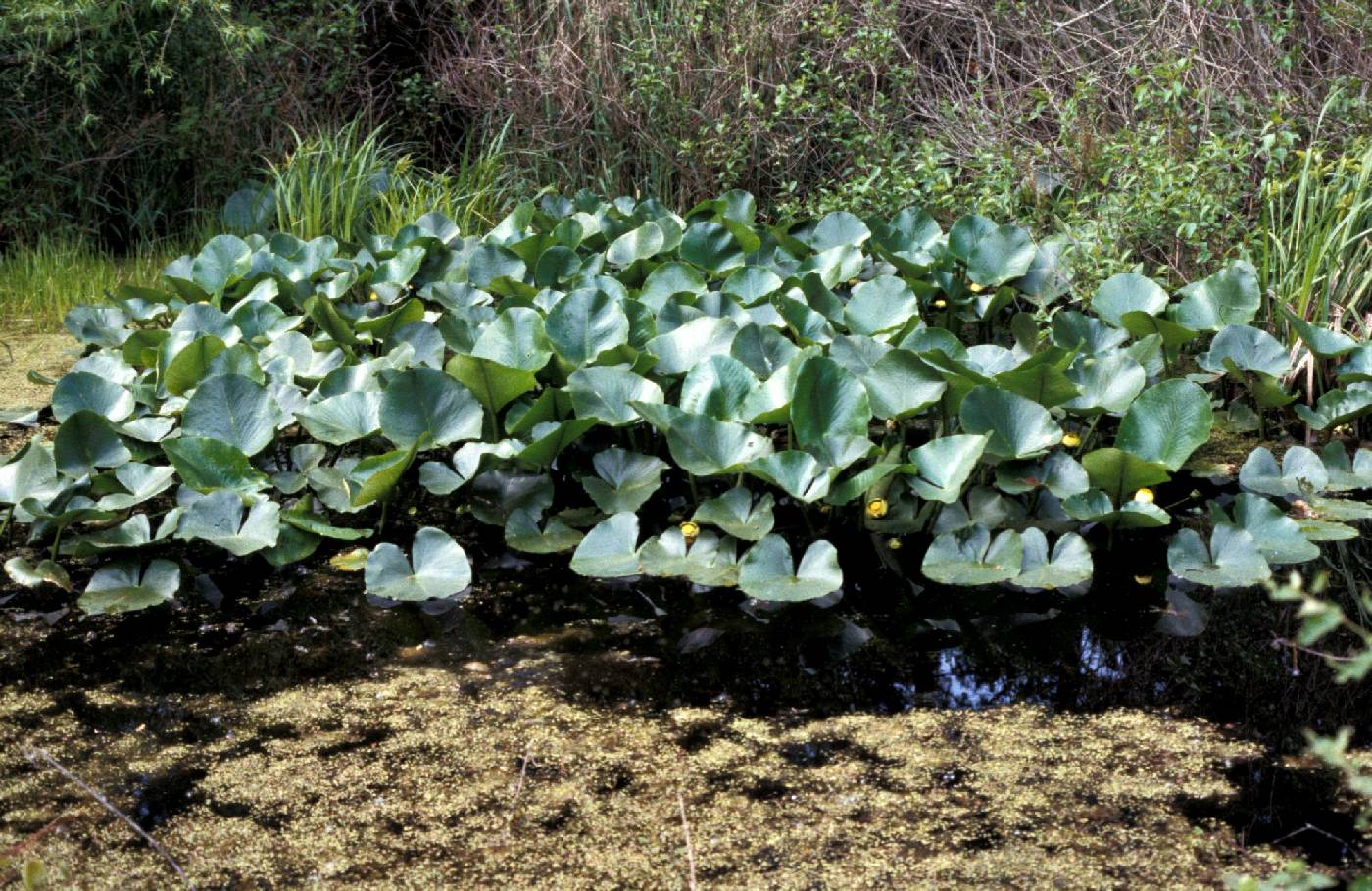|
Nymphaeaceae |
|
|
Herbs , perennial, aquatic, rhizomatous; roots adventitious; air chambers conspicuous in vegetative portions of plant. Rhizomes branched or unbranched, erect or repent, tuberous-thickened, sometimes bearing stolons. Leaves arising directly from rhizome, alternate, floating, submersed, or emersed; stipules present or absent; petioles long. Leaf blade lanceolate to ovate or orbiculate, with basal sinus [peltate], margins entire to spinose-dentate. Inflorescences axillary or extra-axillary, flowers solitary. Flowers bisexual, protogynous [homogamous in some species of Nymphaea], diurnal or nocturnal, borne at or above water surface, occasionally submersed; peduncle long; involucre absent; perianth often persistent in fruit, hypogynous to perigynous [epigynous]; sepals usually (4-)5-12, distinct; petals numerous [rarely absent], often transitional to stamens; stamens numerous; filaments broad to slender; anthers dehiscing by longitudinal slits, with or without connective appendage; pistil 1, 3-35-carpellate and -locular; placentation laminar; ovules numerous per locule; stigma sessile, radiate on stigmatic disk. Fruits berrylike, indehiscent or irregularly dehiscent. Seeds several-numerous; aril present or absent; endosperm sparse; perisperm abundant; embryo minute; cotyledons 2, fleshy. Nymphaeaceae are insect-pollinated, often by beetles. Formerly Nymphaeaceae often have been treated to include Cabombaceae and Nelumbonaceae, but these are now generally segregated.
PLANTS: Freshwater aquatic perennial herbs, usually glabrous, with thick adventitious roots. STEMS: horizontal rhizomes or shortened erect caudexes. LEAVES: large, simple, alternate, stipulate, usually floating; blades often peltate, orbicular to cordate; petioles elongate. FLOWERS: axillary, solitary, large and conspicuous, long-peduncled, floating or elevated above the water surface, actinomorphic, hypogynous, perfect, usually complete; sepals 3-many, green, often petaloid; petals O-many, often in many series, often passing into petaloid staminodes, usually with nectaries; stamens 3-many, free or adnate to the petals; pistil of 3-many usually united carpels; stigmas united into a disk-like structure of 3-many radiating rays; style absent; ovary 3-many locular, the ovules 2-many per locule. FRUITS: follicles or leathery berries, irregularly splitting. NOTES: 6 genera (Barclaya, Euryale, Nuphar, Nymphaea, Ondinea and Victoria) with 60-70 spp., worldwide. REFERENCES: Ricketson, Jon. 1995. Nymphaeaceae. J. Ariz. - Nev. Acad. Sci. 29(1). 26. |
|

